Given the transformative potential of Artificial Intelligence (AI), pharmaceutical companies need to plan for a future in which this technology is routinely used in the drug development and marketing lifecycle. In this post, we break down the four biggest benefits of AI-powered drug labeling.
New players in the pharmaceutical industry are scaling their AI capabilities fast and creating significant value. However, the applications of AI are diverse and these companies need to determine where and how AI-powered tools can most add value for them.
One area where AI-powered tools have the potential to make a significant, tangible impact is drug labeling. In this blog, we’ll explore the top four benefits of AI-powered drug labeling and how these benefits combat industry challenges.
4 Biggest Benefits AI Brings to Drug Labeling
#1 – AI Ensures Sustained Quality & Compliance
One of the biggest challenges in the pharmaceutical label authoring space is ensuring quality and compliance. Since most existing systems and processes cannot easily transform Core Data Sheets (CCDS) to local label formats (USPI, SmPC, etc.), the quality of submission is at risk from manual errors (i.e., incorrectly copying and pasting) and delays.
Further, current processes make it difficult for labeling teams and regulatory affairs professionals alike to understand how and why a label was rendered over time; pharmaceutical companies must engage in time-consuming back-and-forth with regulators to identify and validate specific changes within a given label.
Similarly, when a label update is required, labeling teams must determine if there are other documents that need to be reviewed and subsequently updated. In the absence of automated change management and branching, identifying all the right documents to update can be difficult.
Introducing AI-powered, life sciences-trained tools into the drug labeling process can increase quality and compliance while reducing the time and complexity of current processes. These tools can overlay existing labeling technology systems to harmonize meta-data properties and attributes and store them as modular components in a Component Content Management System (CCMS), allowing labeling teams to make changes to and review specific parts of a label without having to spend cycles updating and reviewing the entire document. Additionally, if labels are updated at the source, AI-powered tools can provide a trigger that will inform and prompt the end user of the source data change and recommend the next best action (i.e., which document to apply the update to next). Many AI-powered tools also have audit trail and label version functionality that are currently not available.
#2 – AI Reduces Costs
The delays and rework caused by manually creating and updating pharmaceutical labels have cost implications in addition to quality and compliance consequences. For each day, week, or month that a label update process drags on, pharmaceutical companies must pay their employees for time that would be better spent performing value-add, strategic work. And, thanks to the “great resignation” following the Covid-19 pandemic, pharmaceutical companies are experiencing unprecedented employee retention issues that are further lengthening the label update process and resulting in a “knowledge drain” and costly overtime.
AI-enabled tools offer drag-and-drop functionality that has the potential to reduce label format generation from hours to minutes, significantly lowering the labor costs associated with the content management lifecycle. Automated data mapping, for example, can reduce manual and non-value add efforts across labeling and regulatory teams and elevate overall team capabilities by driving a higher level of skill and efficiency in performing work. No more copy, pasting and re-creating tables, lists, and graphs. Improved productivity and process quality in turn reduce employee overtime due to rework and delays, as well as the third-party costs meeting global requirements (translation, etc.).
#3 – AI Empowers Global Expansion
Both the expansion of pharmaceutical companies into new markets and the introduction of new products to existing markets bring unique challenges for regulatory submissions and labeling. Since there is no universal label format, pharmaceutical companies must manually transform their Core Data Sheets (CCDS) to one of the scores of local label formats (USPI, SmPC, etc.) depending on the market(s) they intend to enter. Then, once a label is created, it must pass through a rigorous and time-consuming review process that often involves several different health authorities. Given the complexity and manual nature of this process, it can be difficult for pharmaceutical labeling teams to keep straight all the document formats and updates that are required for approval, resulting in delays and rework. In a world where first-mover advantage is critical, being slow to gain label approval could be the difference between achieving superior financial returns and not.
By streamlining the process of document creation and leveraging the power of automation and stored components, pharmaceutical companies can quickly produce labels that are tailored to each individual health authority. The automated reuse of information enhances efficiency and ensures consistency and compliance across each submission. Further, AI-empowered tools can support ecosystems of health authorities and local operation business transactions with scalability and ease, improving time to market. With reduced complexities and enhanced productivity, companies can navigate global expansion more effectively and swiftly bring their innovative therapies to patients in need.
#4 – AI Improves Patient Safety
It typically takes more than twelve months to generate, approve, and distribute a drug label due to the manual nature of the process, meaning it takes more than a year from the time a drug is discovered for it to be readily available in the market. In the case of a potentially life-saving drug, the length of the pharmaceutical label development process could mean life or death for a patient. Similarly, delays across the label update process may result in patients misusing or not adhering to proper protocols for longer than necessary, which can result in adverse health effects.
Generally, life sciences-specific AI-enabled tools aim to improve communication between patients and physicians, empower patients, and increase adherence levels to obtain better clinical outcomes and increase quality-of-life. Natural language models coupled with structured content authoring software can reduce the pharmaceutical labeling lifecycle by up to 50%, helping patients receive the medications they need faster. Further, labeling content can be manually or automatically exchanged with AI translation engines for more accurate conversions into other languages. Natural language generation capabilities contained with many AI tools can also provide recommendations around how warnings should appear across different cultures and geographies to best support patient adherence and outcomes.
Conclusion
ComplianceAuthor® AI can be implemented out of the box in six months utilizing Glemser’s technology solutions, deployment support, and many years of labeling process experience for optimal configuration for an individual company’s needs.
Want to learn how structured content AI can fit into your labeling process? Contact Glemser today to get started.


